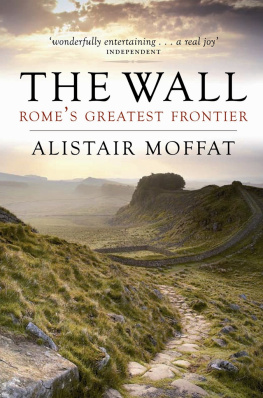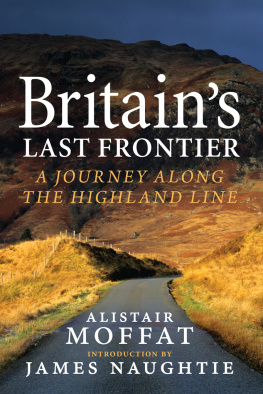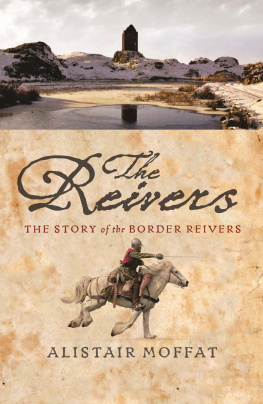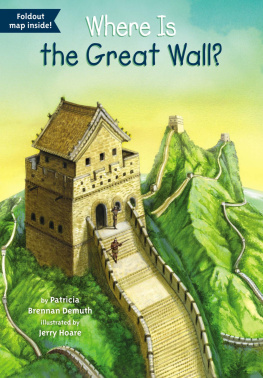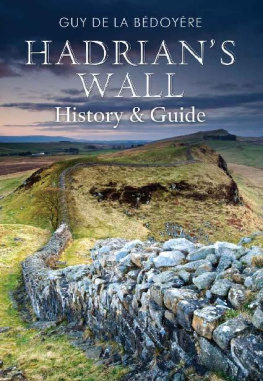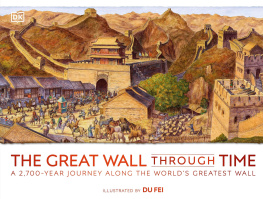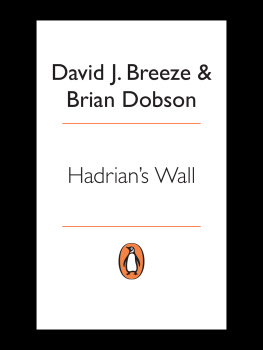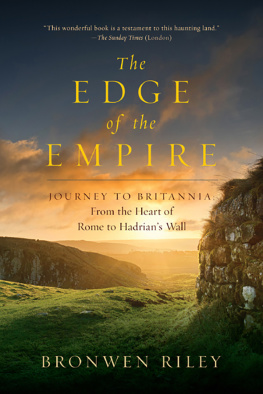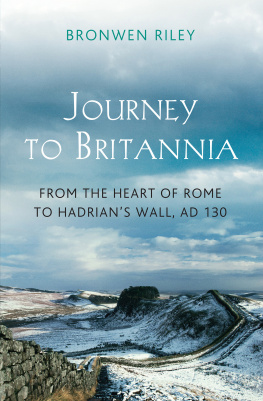The Wall

This eBook edition published in 2012 by
Birlinn Limited
West Newington House
Newington Road
Edinburgh
EH9 1QS
www.birlinn.co.uk
Copyright Alistair Moffat 2008
The moral right of Alistair Moffat to be identified as the author of this work has been asserted by him in accordance with the Copyright, Designs and Patents Act 1988
All rights reserved. No part of this publication may be reproduced, stored or transmitted in any form without the express written permission of the publisher.
ISBN: 978-1-84158-789-9
eBook ISBN: 978-0-85790-481-2
British Library Cataloguing-in-Publication Data
A catalogue record for this book is available from the British Library
In memory of Malcolm Thomas
Acknowledgements
Sandy Mackie sorry, thats Mr Mackie taught me history at Kelso High School, and he certainly made an impression. This is the fourteenth history book I have written. Perhaps at last he should be seen to shoulder some of the responsibility. I gladly accept all of the blame.
Hugh Andrew and his superb team at Birlinn are blameless, of course. Excellent publishers, with great enthusiasms, thorough professionalism and always up for a laugh; they have had a great deal to put up with. Thanks to all.
My agent, David Godwin, also puts up with me and as ever I am grateful for his sage advice. Thanks to him.
Liz Hanson has once again adorned a book with her perceptive photographs. I am glad to have supplied an extended caption. Many thanks.
Paddy Merrall and Graeme Thompson of ITV Border and ITV Tyne Tees respectively and jointly commissioned a TV series based on this book. I am grateful for their faith and confidence. Valerie Lyon directed the series with aplomb and tact. It gave me the chance to make a journey along the Wall with my co-presenter, Tanni Grey Thompson, and with Paul Dobson, Allan Tarn, Paul Caddick, and Beth Moffat. It was great fun, and very informative. Thanks to all.
Robin, Patricia, Andrew and Tony Birley are simply an adornment to the Wall and its history. Robin, Pat and Andrews stewardship of Vindolanda is inspirational and Tony Birleys scholarship exceptional. I am very grateful to all of them for their patience and kindness.
And to everyone who listened to my incessant moaning as I wrote this book, I apologise. I enjoyed the journey very much. This never became that damned book at any time in its writing. Hadrians Wall is a fascinating subject, and I remain fascinated.
Alistair Moffat
Selkirk, December 2007
List of Illustrations

Preface
There is something about barricades, high ramparts overlooking long vistas, crenellated walkways patrolled by watchful soldiers, strong towers, formidable castles. Perhaps the attraction comes from years of television and film: American Indians charging across the plains, whooping and yelling, hurtling towards camera, loosing off arrows at the good guys safe behind the stockade; or baddies assaulting the walls of mighty castles while desperate defenders hurl everything and anything that comes to hand. Feeling safe inside from danger outside probably a primitive instinct lurking in the shadows of many a subconscious.
Ramparts are attractive and surely none more than Hadrians Wall. There is nothing else remotely like it west of China, nothing bigger, grander, more masterful and more impressive. Standing on the Whin Sill at Housesteads Fort, looking over the northern moorland, perhaps scanning the horizon for a flicker of movement, or up at Walltown Crags, where the Wall glowers over grey Thirlwall Common, there is a sense of borrowed authority, of let them come or, to paraphrase a little, let them gaze upon my works and despair.
Even though it nowhere rises to its original height, and long stretches of it have disappeared, power pulses from Hadrians Wall. Built by a culture galvanised by the will of one man, it is a miracle of self-aggrandisement and ancient disregard for practicalities. A mighty Wall which divides our island, devised by conquerors to limit their empire, it somehow still manages to play to the little boy and his toy soldiers in an imagined landscape.
Although it never marked a cultural frontier, or the line along which the border between England and Scotland would eventually run, Hadrians Wall nevertheless had an important early role in creating an idea of the north of Britain. For almost three centuries, savagery and danger lay beyond it. The north was threatening while the south was sunlit, civilised, sophisticated. It is impossible to say when or how these notions came into play, but they are there, as surely as the Wall. And its story is fascinating.
This book attempts to tell the story, beginning as early as seemed sensible. Along the way the text contains many boxed items of information which seemed interesting, even important, in themselves but did not necessarily fit into the narrative. They can be read as asides, skipped and read later, or ignored. The last chapter is also not part of the narrative. Having spent a lot of time on Hadrians Wall over the past two years and knowing it reasonably well, it occurred to me that an itinerary taking in the places I enjoyed most might be more helpful than an exhaustive list of internet addresses and opening times. Others will have different views, but I found the visits to the places set out in the last chapter very pleasurable.
As I was finishing this book, in December 2007, my father-in-law, Malcolm Thomas, died. He had been a regular soldier, a man with many old-fashioned virtues and few old-fashioned opinions. Cawfields milecastle would have made him smile with recognition of its daftness, and the whole enterprise of building and garrisoning the Wall would have prompted perceptive and informed comments. I am sorry not to have them, and out of the greatest respect and affection, this book is dedicated to his memory.
Introduction: Remembering the Empire
Hadrians Wall is the largest, most spectacular and one of the most enigmatic historical monuments in Britain. Nothing else approaches its vast scale: a land-wall 73 miles from east to west and a sea-wall stretching at least 26 and probably 50 miles down the Cumbrian coast. Many of its forts are as large as Britains most formidable medieval castles, and the wide ditch dug to the south of the land-wall, the Vallum, is more monumental than any prehistoric earthwork.
And yet the story of the great Roman Wall, its builders and originators, was almost immediately misunderstood, confused or forgotten. Only five or six generations after the end of Roman Britain in the early fifth century the name of Hadrian had faded completely and been disconnected from his mighty creation, the dates of its construction had been got wildly wrong and the historical sequence of events had fallen badly out of kilter. The Wall still dominated the landscape, many thousands had lived along its length for three hundred years, a dozen great forts were still standing, inscriptions offering names and dates were everywhere how did early historians fail to record even the rudiments of its story?
Gildas was probably a son of the Old Welsh-speaking kingdom of Strathclyde, born some time around AD 504 at Dumbarton on the Clyde. Having become a monk, he composed a fiery sermon On the Ruin and Conquest of Britain. Calling them ignorant tyrants, he raged against the corrupt and feckless contemporary British kings who were allowing the Picts and the Scots to raid from the north and pagan Germanic warriors from across the North Sea to settle large swathes of eastern and southern England. It is a splendid froth of invective probably composed in the 560s, and is one of the earliest written British sources to survive in the post-Roman period. Interspersed amongst the insults are snippets of history, or at least tales which Gildas clearly believed were true. And some of them refer to Roman walls.
Next page
